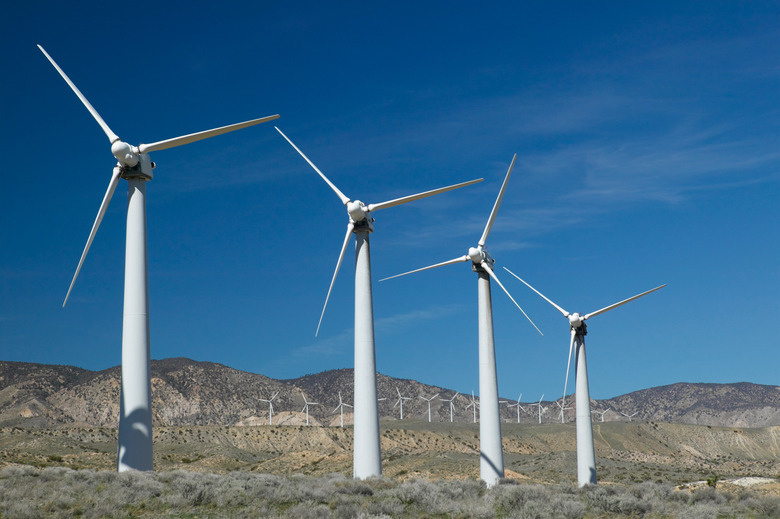Sources Of Kinetic Energy
Kinetic energy is the energy of motion, and it is one of the most fundamental forces of nature. Kinetic energy has allowed us to produce electricity through combustion turbines, movement for automobiles, and energy sources such as wind power and hydro power. All kinetic energy begins as potential energy in the form of either physical objects located in specific places, chemical potential energy or nuclear potential energy.
Chemical Potential Energy to Kinetic
Chemical Potential Energy to Kinetic
Chemical processes, combined with combustion, convert potential chemical energy into kinetic energy. This is how automobiles are powered. Other sources of chemical energy include fuels such as coal or certain explosives such as dynamite. When combustible chemicals–regardless of their nature or origin–are ignited in the process of combustion, the energy is transferred into kinetic energy. In the case of automobiles, gasoline is converted from a liquid to a gas through the process of heating up and is injected into pistons. When the gasoline explodes, it pushes back on the pistons, creating an explosive force that is transferred to the axles and wheels of the car. In the case of coal power, when coal is ignited and creates heat, the rising hot air turns turbines, which in turn produces electricity through being connected to generators. Hence, it is the burning of coal–potential energy– that creates hot air, which acts as kinetic energy as it turns the turbines.
Natural Sources of Kinetic Energy For Electricity
Natural Sources of Kinetic Energy For Electricity
There are multiple other sources of kinetic energy that can be harnessed for electricity. Wind-powered turbines can create energy through windmills or wind-power generators. Wind energy is harnessed into kinetic energy by turning panels that are designed and angled to catch as much wind as possible. This happens much in the same way that a sail on a boat uses wind to power the ship. However, it is the original turning of the earth that creates wind currents and wind channels, which in turn produce energy when the wind comes into contact with other objects. Water is another source of energy that can be converted from potential energy to kinetic energy and eventually, electricity. Originally, it is the force of gravity that converts the potential energy of water as a fluid to move it, thus creating kinetic energy. As water bashes against rocks, soil or vegetation, those objects experience the kinetic energy of flowing water. Similarly, flowing water can also turn turbines geared toward hydro-power plants, which creates electricity.
Other Sources of Kinetic Energy
Other Sources of Kinetic Energy
Apart from being used to generate electricity, there are many other sources of kinetic energy in nature. For example, a rock sitting on top of a cliff suddenly falls. It has been transferred from potential energy into kinetic energy through the force of gravity pulling it down to the earth. If you remember Wiley Coyote and Roadrunner, then you will have many animated examples of this happening.
References
Cite This Article
MLA
McGuffin, David. "Sources Of Kinetic Energy" sciencing.com, https://www.sciencing.com/sources-of-kinetic-energy-12298540/. 22 September 2017.
APA
McGuffin, David. (2017, September 22). Sources Of Kinetic Energy. sciencing.com. Retrieved from https://www.sciencing.com/sources-of-kinetic-energy-12298540/
Chicago
McGuffin, David. Sources Of Kinetic Energy last modified March 24, 2022. https://www.sciencing.com/sources-of-kinetic-energy-12298540/
